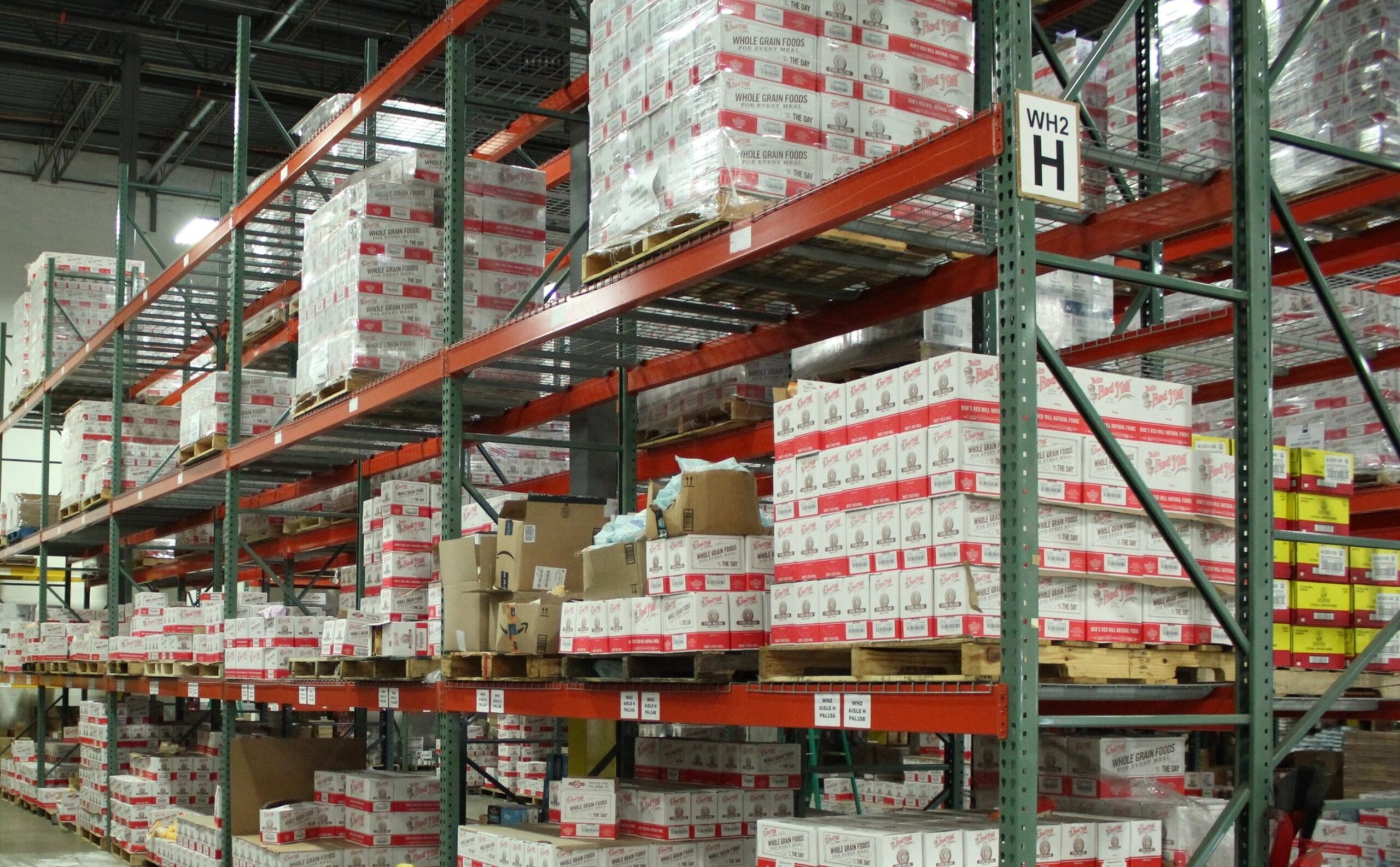Contents

Fast shipping capability is one of the most important expectations to manage among e-commerce customers, as almost 70% of online shoppers name this as the deciding factor for placing an online order. With big-name retailers like Amazon making 2-day shipping standard, it is essential to be able to offer quick shipping times while still turning a profit.
The goal is to be able to manage customers’ expectations when it comes to shipping speeds without hurting your bottom line in the process. Effective calculation of shipping costs can make that happen.
Variables for Calculating Shipping Costs
Shipping carriers look at specific variables when calculating shipping costs, which include the dimensions and weight of the package as well as the distance it has to travel. Each of these variables can impact the cost of shipping.
Size of the Package
Dimensional (DIM) weight is a pricing technique used to calculate shipping costs by all the major shipping carriers. This DIM weight is calculated by multiplying the length, width, and height of the package and then dividing that by a standard DIM divisor. The shipping carrier will then determine if the DIM weight or the actual weight of the package is greater, and they will charge based on the larger of the two.
Weight of the Package
The package will be weighed before shipping. If the actual weight is greater than the DIM weight, you will be billed for the former. Generally, items that are heavier and bigger will be more expensive to ship than smaller, lighter packages.
Shipping Destination
There are eight different shipping zones in the United States, and these zones are used to calculate shipping rates. Shipping zones measure the distance between the point of origin and the shipping destination. Overall, the further the package has to travel, the higher the cost of shipping.
Shipping zones are calculated based on the point of origin, where the package is shipped from. Usually, the higher the shipping zone, the higher the shipping costs.
Delivery Speed
Customers generally expect fast delivery times, but the costs associated with faster shipping can vary based on the shipping zones. If you have one warehouse or fulfillment center and all items are shipped from this point of origin, shipping costs will vary based on your customer’s location.
For example, if you are shipping to Zone 8 and 2-day shipping is still expected, you will need to use a more expensive method like air shipping. If you are shipping to Zone 1, you are able to use the cheaper ground shipping to meet the same delivery timeline.
Value of Contents
Highly valuable contents will often need to be insured to account for potential loss or damage, and this can increase the total shipping costs. Many of the major shipping carriers will offer built-in insurance up to a certain dollar amount, but anything above that will require additional fees.
Issues can also come up with shipping. It’s wise to leave some room in your shipping budget to account for possible emergencies.
Shipping Carriers & Shipping Cost Calculators
The three major U.S. shipping carriers are the U.S. Postal Service (USPS), FedEx, and UPS. Each takes the previously mentioned shipping variables into account when calculating their shipping rates. Each shipping carrier also provides a shipping calculator to help you determine exact costs.
USPS Shipping Calculator
USPS is often one of the most cost-effective shipping options for e-commerce businesses. They already have local residential routes in place, so they already deliver to these customers. They can add your deliveries to their schedule without making extra stops.
You can apply for USPS commercial pricing to receive 15% off retail shipping and postage prices. You can use the USPS Retail Postage Price Calculator by inputting the following to calculate shipping costs:
- Destination country
- Originating zip code
- Delivery zip code
- Date and time of mailing
- Size and shape of item
FedEx Shipping Calculator
Offering a variety of shipping speeds and international shipping capabilities, FedEx uses dimensional weight to calculate shipping costs. If you are a growing company looking for a shipping solution, the FedEx Small Business program offers a rewards program, a variety of shipping services, and up to 16% off select shipments.
You can use the FedEx calculator by inputting where the package is being shipped from and to in order to determine rates.
UPS Shipping Calculator
UPS also offers a variety of shipping speeds and bases costs on dimensional weight. With a UPS Store Connect account, you can gain access to shipping discounts, which can include up to 20% off air shipping and 10% off ground shipping.
You can estimate UPS shipping costs with this tool when inputting the package origin and destination and shipment information.
Determining What to Charge for Shipping
Customers expect fast and often free or low-cost shipping. To be able to compete with the likes of Amazon Prime, you will need to find a way to offer competitive shipping rates while still managing to turn a profit.
Things to consider when looking at how much to charge for shipping include the following:
- Overall price of your products: Higher priced items will make free shipping a more attractive option.
- Profit margins: This involves how much of the base price has been adjusted to account for shipping.
- Average order value (AOV): When the amount spent per transaction is low, shipping costs can often be more than the cost of the products.
- Average shipping costs: This should take potential discounts into account.
You can account for additional charges by adding the following into your shipping prices as well:
- Surcharges for heavy or larger items as these will cost you more to ship
- Extra fees when a signature is required as this will incur a fee from the carrier
- Packaging costs if you pay for this as a separate line item
- Additional insurance if the contents are more than what is typically covered
- Handling charges, including fulfillment and labor
- Your reshipment and return rates and associated costs to you
Strategies for Shipping Costs
Shipping costs that you offer to the customer are not going to directly reflect the shipping prices you pay. There are some ways to maintain profit margins while offering low-cost or free shipping. For example, consider increasing the base price of your product to make up for shipping costs. You can also offer bundles or a minimum spend threshold to increase the AOV.
Price out the different carriers and shipping speed options to determine your options. The closer your distribution point is to your customers, the cheaper shipping will generally be. This is where using a distributed warehousing system and housing products in strategic locations can help with shipping costs.
When it comes to pricing shipping for your customers, you have some options, including these:
- Market that you offer free shipping to entice customers. This can help you make more sales to offset your shipping expenses.
- Charge a flat rate for shipping that will cover most of your shipping costs for the majority of orders.
- Charge per order for shipping, thereby passing the shipping costs on to the customer.
It can be helpful to run a campaign and test your shipping cost pricing to ensure that your strategy is effective. For instance, run a free shipping campaign and keep track of your order volume during this time to see if it increases. If your AOV is typically around $40, try offering a free shipping promotion if they spend $50 and monitor if sales increase.
Sample E-Commerce Shipping Costs
The goal of determining what to charge customers for shipping is to ensure that your profit margins remain in place. The following example shows what to charge to maintain a 50% profit margin while accounting for e-commerce shipping costs:
| Cost | Amount |
| Product | $10 |
| Shipping | $2 |
| Packaging | $0.75 |
| Credit card fee | $1 |
| Total | $13.75 |
| Profit margin | 50% |
| Selling price | $27.50 |
Comparison of Average Shipping Costs Among Major Carriers
| Carrier | Shipping Option | Shipping Speed | Sample Price* |
| USPS | USPS Retail Ground | 2–8 business days | $13.90 |
| USPS | Priority Mail | 1–3 business days | $14.10 |
| USPS | Priority Mail Express | Next day to 2-day | $44.10 |
| UPS | UPS Ground | 1–5 business days | $11.92 |
| UPS | UPS 2nd Day Air | 2nd day by specific times | $26.96 |
| UPS | UPS Next Day Air | Typically by 10 AM next day | $46.11 |
| FedEx | FedEx Ground | 1–5 business days | $11.41 |
| FedEx | FedEx 2Day | Within 2 business days | $25.71 |
| FedEx | FedEx Standard Overnight | Next business day | $42.41 |
*Price is estimated based on a 10-pound package shipped in Zones 1 or 2 between 0–150 miles in the contiguous United States based on 2020/2021 pricing rates.
Reducing Shipping Costs
Small businesses often need to find a way to compete with major online retailers that are able to offer free shipping. This can be tough when trying to maintain profit margins. To improve your profit margins and keep your customers happy with lower shipping rates, try these methods to bring your shipping rates down:
- Obtain discounted shipping rates through one of the major shipping carriers.
- Find shipping and packaging supplies at a discounted rate.
- Keep the weight and dimensions of the packages as small as possible.
- Distribute inventory near your customers to reduce overall shipping distance.
- Outsource order fulfillment to a 3PL.
Using a 3PL for Better Shipping Rates
A 3PL, or third-party logistics provider, can help to reduce your shipping costs. When outsourcing order fulfillment to a 3PL, you can leverage any shipping discounts they have since they typically do a lot more shipping volume than you do on your own. They often already have relationships with the major shipping providers and can negotiate shipping prices for you to ensure the lowest possible rates.
A 3PL also often splits inventory between multiple fulfillment centers, which can reduce the distance the order will have to travel. The closer the fulfillment center is to the delivery address, the lower the shipping costs and the faster the shipping speeds will be.
Using a 3PL can also save you time since they manage the whole process. This frees you and your employees up to take care of other important aspects of your business.
References
How Customer Expectations Have Led to the Rise of Hyperlocal Fulfillment. (April 2022). Forbes.
Retail Postage Price Calculator. (2022). USPS.
Small Business Resources Center. (2022). FedEx.
Calculate FedEx Shipping Rates. (2022). FedEx.
The UPS Store Connect. The UPS Store.
Estimate Shipping Cost. The UPS Store.




